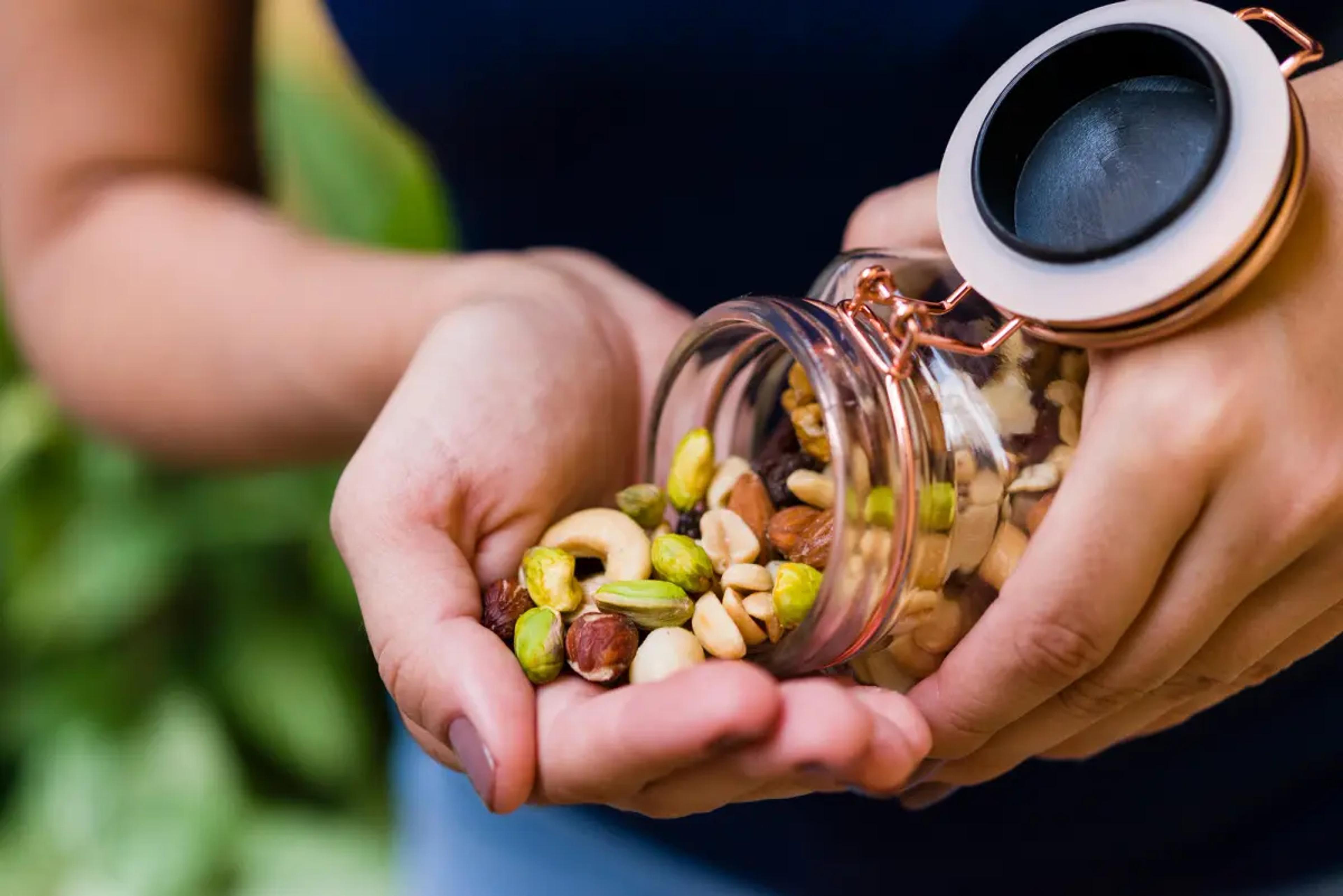How Much Sugar Can I Have Today?

Blue Daily
| 4 min read

How Much Sugar Can I Have Today?
60% of Americans aged three and older have more than their daily recommended sugar intake, according to the Centers of Disease Control and Prevention (CDC). Did you know there are different recommended daily limits on added sugars as part of a diet, depending on your age, gender and existing health condition? Generally, however, you should limit your intake to under 50 grams of added sugar a day.
Sugar intake guidelines for different ages
For all adult Americans, it is recommended by the CDC to have no more than 10% of your daily caloric intake from added sugars, or less than 50 grams of added sugar or 12 teaspoons a day. There are lower limits for pregnant and breastfeeding women and infants of different ages as well. Added sugars are a main concern regarding Americans’ sugar intake and are distinct from naturally occurring sugars found in fresh food, according to the American Heart Association.
Sugar intake guidelines for kids 12-36 months
The FDA guidelines for daily values give different recommendations for kids under the age of three. This is based on a lower recommended daily caloric intake of 1,000 calories rather than the 2,000 recommended for adults and kids over the age of three. This lowers the recommended limit of added sugars to 25 grams a day maximum for kids aged one through three years old.
Sugar intake guidelines for infants and kids under 12 months
Infants under the age of 12 months or one year of age are not recommended to have added sugars as part of their daily diet. The FDA recommends no added sugars be introduced into a child’s diet before the one-year mark. Be on the lookout for added sugars in baby foods and fruit juices.
Main sources of sugar intake for Americans
Added sugars are extremely common in foods and beverages in the average American’s diet. Three in five Americans exceed the recommended amount of added sugar in their daily diet, according to the CDC. Be aware of the most common sources of added sugars:
- Beverages such as coffees, teas, sodas
,and juices with added sugars - Fruits with added sugars
- Dairy products with added sugars
- Breads and baked goods
- Breakfast cereals and cereal bars with added sugars
Ways to limit your sugar intake
The main rule of thumb to limit your sugar intake and keep within the recommended daily values is to limit added sugars to no more than 10% of your daily caloric intake. Based on the recommended daily intake of 2,000 calories, this will keep your added sugar intake under the 50-gram daily recommendation.
Following are some ideas for limiting your added sugar intake, and alternatives to consider replacing some common sources of added sugar:
Limit your intake of sugary beverages and drinks with added sugar
Beverages are the number one source of added sugars in the average American’s diet according to the CDC. Many beverages have more than the daily suggestion of added sugars, if not in one serving, within a single can or bottle. This is especially true of sodas, sweet teas and coffees, which are extremely popular and common in America – 63% of Americans have at least one of these beverages daily.
Limit or stop drinking alcoholic beverages
Alcoholic beverages are also a major source of added sugars. Not only does limiting alcohol help with fitness goals and sleep, amongst other health benefits, but it also will help moderate sugar intake. Alcoholic seltzers, and mixed alcoholic drinks often have high levels of added sugars.
Eat fresh fruit or fruit packed in fruit juice instead of fruit packaged with high fructose corn syrup
A large portion of fruit eaten by Americans is not fresh. According to the CDC, as of 2019, only 12% of American adults eat the recommended amount of fresh fruit per day. The rates are even lower for adult males and low-income adults. Similarly, many American children do not eat enough fresh fruits and vegetables, instead drinking sugary fruit drinks, according to the 2021 CDC report on Fruit, Vegetable, and Sugar-Sweetened Beverage Intake Among Young Children. Fresh fruit does not count toward added sugar intakes and is a healthier option than processed fruits and fruit drinks.
Choose yogurts and dairy products without added sugar
Many dairy products and yogurts, especially, contain added sugars or sweetened ingredients. The median sugar content in a serving of dairy is almost 10 grams, according to a study in Current Developments in Nutrition, and this rate is much higher in flavored dairy drinks and yogurts. Be aware of added sugars in popular flavored dairy drinks, ice creams, coffee creamers and yogurts. Consider replacing these types of snacks or drinks with a fresh fruit smoothie or a snack of plain lightly sweetened Greek yogurt with fresh fruit.
Be aware of common ingredient names that are or contain added sugars, according to the CDC:
- Cane juice
- Corn syrup
- Dextrose
- Fructose
- Fruit nectars (such as agave nectar)
- Glucose
- High fructose corn syrup
- Honey
- Malt syrup
- Sucrose
- Sugar cane
Related Links:
- Food Facts You’ve Heard, But Aren’t True (mibluesperspectives.com)
- What to Look for When Reading Food Labels (mibluesperspectives.com)
- Are Sugary Drinks Associated with Colon Cancer? (mibluesperspectives.com)





